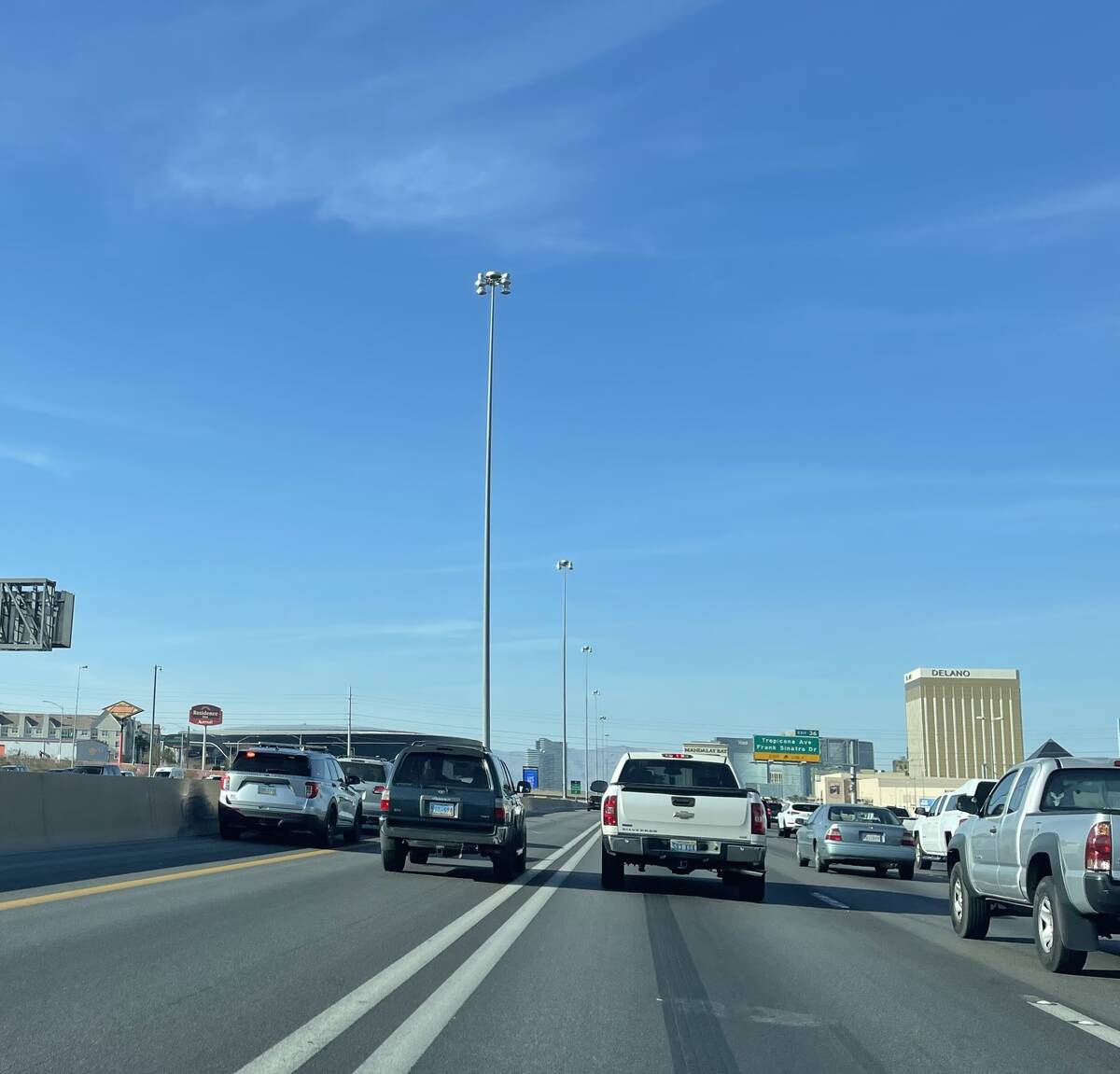Get out of my lane: HOV system regulations could change in future
Last year, the Nevada State Police issued 1,821 citations for violations of high occupancy vehicle lane regulations in Las Vegas, a big drop from the numbers seen during initial patrolling of the lanes.
When the new carpool lanes on Interstate 15 opened to drivers in 2019 as part of Project Neon — adding to the existing HOV lanes on U.S. Highway 95 — new regulations went into effect that, among other things, require at least two passengers in vehicles using the lanes.
State troopers also began enforcing the regulation 24 hours a day, seven days a week. Previously, they were enforced only during peak morning and evening traffic hours on weekdays along U.S. 95.
In the first six months of the new regulations, state troopers handed out 2,542 citations — including 518 citations in the first 30 days. The number of citations issued in that six-month period breaks down to about 14 per day. For all of 2021, the rate was around five HOV citations per day.
The State Police has noted a staffing shortage, which could account for part of the drop. Also, consider that the agency’s southern command covers all of Clark County and some neighboring counties. The Las Vegas Valley freeway system alone accounts for an average 128,938 vehicles per day, according to the Las Vegas Convention and Visitor Authority. That’s a lot of road and motorists to cover.
Round-the-clock enforcement
Many motorists are angry about the round-the-clock enforcement on the HOV lanes. We’ve all seen drivers misuse the lanes — well, at least the Road Warrior and the dozens of readers who have angrily reached out have — over the last couple of years. Motorists use the lane without a second occupant; some use it as their pseudo fast lane, weaving in and out and crossing the solid white line; and vehicles with more than two axles are routinely found driving in the carpool lane.
Las Vegas City Councilman Stavros Anthony, who has been a staunch opponent of the HOV lanes since before the 24-hour regulations were implemented, said he routinely gets complaints from those in his ward.
“People are driving on the freeway, they want that lane open so they can use it,” Anthony said. “Especially during rush hour traffic. The lane is either empty or not very well used. So they want that opened up to be able to get through all that traffic. Then they tell me and I see it myself: when you look at the HOV lanes, 80 percent of the people driving in them are single drivers.
“If we are going to have them, they should be a couple hours in the morning and a couple hours at night,” Stavros added. “They should not be 24-7.”
When the new 24-hour regulations launched, Las Vegas city officials vowed to dismiss carpool lane violation tickets. For the most part, they’ve stuck to that.
The Las Vegas Municipal Court last year processed 425 HOV violation citations, with 26 percent of those being dismissed, according to the city. Forty-eight percent saw guilty pleas while the remaining 26 percent had no disposition.
Lane changes ahead?
The Nevada Department of Transportation has heard motorists’ complaints and suggestions and is reviewing the HOV lanes’ usefulness. That effort led to the addition of seven more HOV lane access points in 2020
“NDOT remains committed to listening to the public about the HOV system and exploring potential changes if supported by the data, the law, and oversight agencies,” Justin Hopkins, NDOT spokesman said.
The pandemic delayed NDOT’s HOV study as the department waited for traffic volume on the highways to return, but it finally got underway last year.
The focus is to determine whether the current 24/7 operation of the HOV system is accomplishing the goals set out by NDOT and the Federal Highway Administration.
“Currently, the study is collecting and validating data on traffic volumes, speeds, and crashes to help determine the initial HOV hours for a potential 18-month pilot program,” Hopkins said. “In the coming months, NDOT will also receive equipment to evaluate HOV occupancy, which could likewise impact the hours for the potential pilot.”
NDOT this year will decide whether the collected data warrants a potential change in the round-the-clock operation of the HOV system.
“If the data supports 24/7 operation, the study will be deemed complete,” Hopkins said. “If a change appears warranted, NDOT will launch a pilot program using the newly recommended hours.”
During a pilot program, NDOT would continue to collect data for an another 18 months to determine if the hours of operation need to be adjusted.
For motorists like Councilman Anthony and many in his ward, such a change can’t come soon enough.
“I’m a member of the Regional Transportation Commission so I’m looking forward to seeing that study,“ Anthony said. “If it were up to me, I’d eliminate them completely.”
Contact Mick Akers at makers@reviewjournal.com or 702-387-2920. Follow @mickakers on Twitter. Send questions and comments to roadwarrior@reviewjournal.com.
























